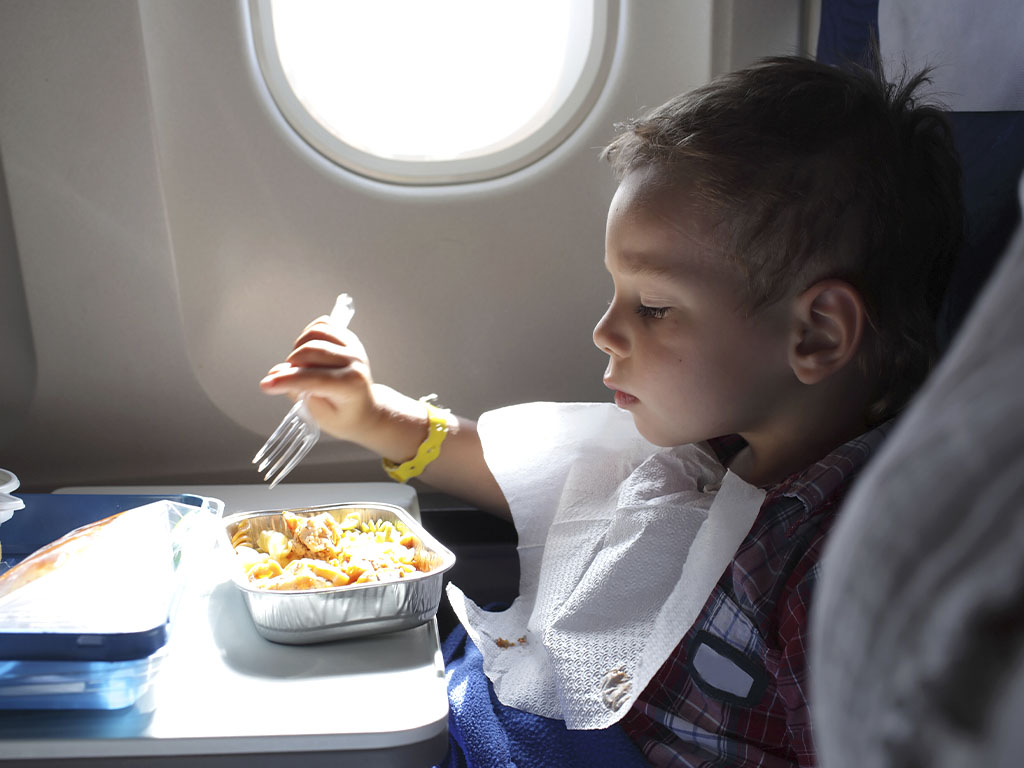Technology is becoming so tightly woven into our lives that we’ve come to expect connectivity to be constant and ubiquitous — even at 30,000 feet above ground.
The good news is, it’s now more possible than ever before.
With new and upcoming connected-crew capabilities, airlines can carve out an all-new customer experience while also maximizing the investments they’ve made to equip their fleets with Wi-Fi.
Giving inflight crews the power to access real-time, dynamic information about the flight and the passengers on board — as well as some insight into pertinent on-the-ground information — can smooth out operations. Here’s how:
The Case for Connecting Crews
The airline industry is already moving away from paper-based flight management and introducing enhanced digital platforms.
However, much of the information on crew phones/tablets/phablets is static, having been last updated at the time of departure. While digitizing manuals and manifests speeds up record-keeping, connectivity is key to making the most out of airlines’ digital systems and operations.
There are dozens of ways equipping crews with connected devices can help improve operations, make passengers happier and inspire greater customer loyalty.
For instance, imagine if a flight attendant could know prior to landing that a VIP passenger is about to miss their connecting flight, or that a group of travelers is facing a flight cancellation. The cabin crew could then make a quick change to their reservations on a tablet to get those customers back on track.
This kind of proactive, in-the-moment service could help prevent passengers from, say, venting their frustrations over social media — thus helping to protect an airline’s brand reputation.
On the operations side, the ability to report cabin equipment failures or supplies issues while still inflight would allow ground maintenance crews to pull together parts and arrange for a service team to meet the plane when it lands. That keeps flights on time, and keeps passengers happy.
Internally, maintaining an open line of communication to headquarters for emergencies can help boost flight safety. Meanwhile, during times of disruption, connectivity can help speed up crew redeployment and alert attendants to work-roster changes.

The Benefits of a Connected Crew Add Up
We’ve covered some of the big must-haves when it comes to connecting crews — but there are a number of add-on bonuses that hammer home the idea that it’s a worthwhile investment.
In terms of ancillary revenue generation, digitizing the duty-free shopping experience to enable home delivery could reduce onboard weight and free staff up to do other work. Perhaps those new tasks include concierge services for premium passengers, such as making destination hotel bookings, restaurant reservations and buying tickets to special events.
Meanwhile, a mobile cabin-management interface can easily turn tablets and phones into digital dashboards that put the inflight experience at crews’ fingertips. The devices can be used to wirelessly control the inflight environment, including inflight entertainment systems, cabin lighting and communications. That control extends to other “smart” elements of the cabin — i.e. electronics and equipment outfitted with sensors and wireless connectivity — that can be networked to all work together in one cohesive and synchronized system for an onboard Internet of Things (IoT).
Smart galleys, for example, could report on stock levels and meal-preparation status, alerting both attendants and ground crews when a particular item is running low while also compiling statistics on the most popular menu items to help airlines stock appropriately in the future.
Pilots equipped with connected tablets can better navigate the skies, receiving live weather updates and flight path alerts on connected tablets — or maybe even digital dashboards or smart glasses — while receiving complete updates from dispatch and operations.
While digitizing manuals and manifests speeds up record-keeping, connectivity is key to making the most out of airlines' digital systems and operations.
How Airlines Are Already Using Connectivity
All of these potential scenarios aren’t far off in the future. Airlines are already taking advantage of connectivity to offer services on crew devices in clever ways.
Finnair put Toughpad EFB tablets to work for pilots, replacing 10,000 pages of paper manuals and adding capabilities with apps enhanced by a data connection. In 2015, the airline also issued cabin crew tablets equipped with chip-and-PIN card readers to boost sales of duty-free items and other high-value items.
At the same time, connectivity allows card payments to be verified while still inflight, helping address concerns over fraudulent transactions.
Last year, Srilankan Airlines launched a customer-service alert system that captures passenger feedback at multiple touchpoints along their journeys and measures their overall “mood” via a customer-relationship management (CRM) platform. That means that when troubles arise at the lounge or check-in desks, the airline is better equipped to handle the issue in real time.
Speaking of bespoke CRM, Delta Air Lines introduced a new personalization platform in 2015 — its guest service tool — which allows flight attendants to recognize high-value customers via an integration with its frequent-flyer database. The airline envisions the tool evolving to offer customers updates on delayed or cancelled flights and real-time gate information — features that are facilitated by connectivity.
And when it comes to empowering crews themselves, KLM uses Yammer, an internal social-media platform, to keep employees informed and engaged. The airline’s Inflight Services team uses the platform to get up to speed, as well as share helpful tips and advice. KLM has found that the dedicated social-media platform not only helps workers do their jobs, but it also improves morale and helps bridge the sense of separation crew can sometimes feel while on duty.
Airline connectivity isn’t just for surfing the web while at 30,000 feet. It can be leveraged and maximized to enhance the flying experience in both subtle and overt ways — from improving operational efficiency to delivering an experience worth paying more for. In the air as on the ground, the possible applications of connectivity are limited only by the imagination.



